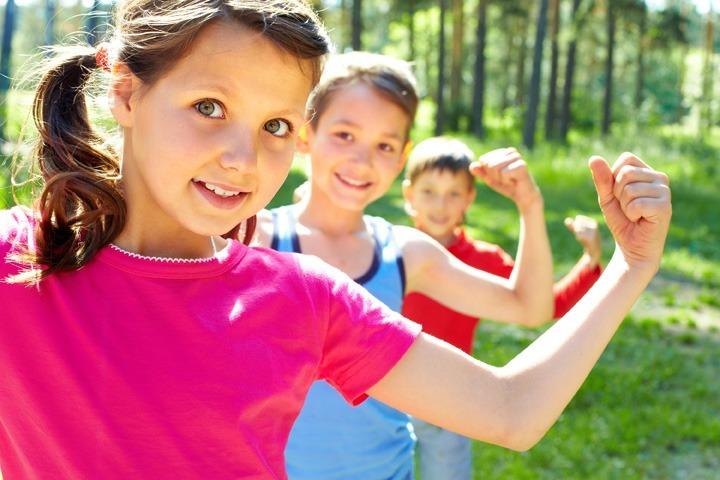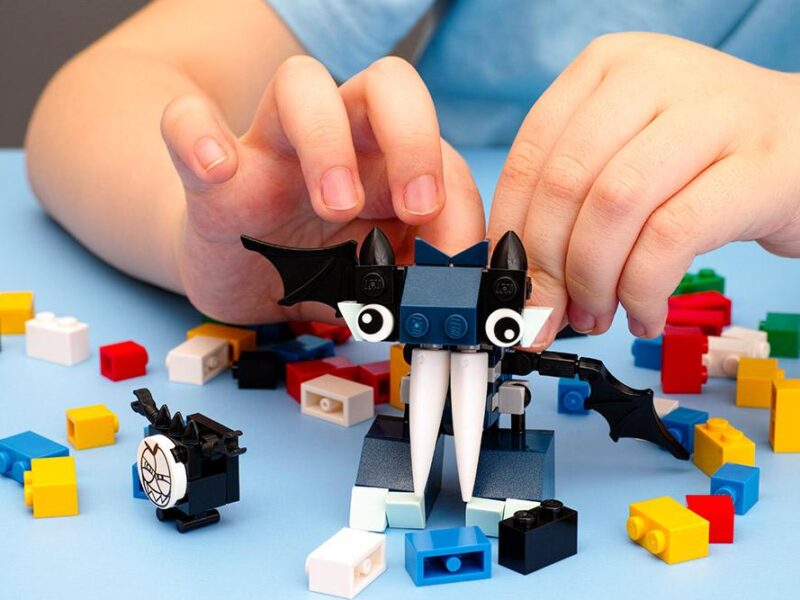
Summer activity tips from a pro
By Kim Simpson
What are some fun activities that parents can do with their children to keep everyone moving and active during the summer months?
A great way for families to stay active and incorporate fitness into their summer is to find new and unique ways to keep physical activity novel and exciting. Here are a few quick and easy ideas to keep on hand for summer days ahead:
Beach Ball of Fitness: This is one we found and kids love it. On each panel of a beach ball write a fitness move (jumping jacks, burpees, squats, lunges…). Toss the ball in the air, yell a number, and have someone catch the ball. Everyone completes the move that is on the panel facing the player, performing it the number of times that was shouted out.
Fitness Scavenger Hunt: This requires a little more work to set-up but the cards can be re-used all summer long. Use recipe cards to record various fitness activities combined with a clue and create a trail of fitness by hiding them around your house or yard. Here’s an example of a clue ‘hop like a bunny to the place where we find carrots’.
Yoga stories: Make up your own story or pick one from your child’s favourite books. As you read the story have kids act out the animals, trees, vehicles, people and hold their poses until they come up with the next.
Dance party: Who doesn’t love a dance party!? Find a playlist of several songs that gets everyone grooving.
What is the daily recommended amount of physical activity for children?
According to canfitpro, which aligns with the World Health Organization guidelines for children aged 5-17, the daily amount of accumulate physical activity, at a minimum is 60 minutes of moderate to vigorous intensity physical activity. Canfitpro also has recommendations for wellness that reflect the holistic nature of kids’ health and wellness. These recommendations are:
Cardiorespiratory: Incorporate activities that include large muscle movements that increase heart rate, such as running, jumping, and skipping
Muscle strengthening: Find opportunities to increase strength, motor coordination and bone strength such as body weighted exercises – push-ups, planks, squats, lunges
Flexibility: Children are naturally more flexible, be sure to teach and practice the skills to maintain range of motion and proper posture to decrease future injury and maintain mobility
Nutrition: teach kids about choosing fresh, whole foods daily
Mindset: Provide opportunities to enhance self-esteem, self-efficacy and confidence through positive fitness experiences
How does physical activity benefit children in terms of physical, mental and social wellbeing?
Physical activity benefits the whole child. The first and most obvious benefit of physical activity for children is that is gets their heart and lungs working. Physical activity participation has the same overall benefits for children as it does in the adult population, it improves aerobic fitness by strengthening the heart and lungs, it increases bone density by adding novel strains to the muscle-bone connections, and it helps regulate energy levels by allowing an outlet of excitement and fidgety movement.
Developmentally, physical activity offers opportunities for children to develop coordination and control as their brains learn to move their growing bodies. It is important for kids to practice and become confident with fundamental movements such as throwing, catching, jumping, striking, running, kicking, and opportunities to use agility, balance, and coordination.
These fundamental movements form the basis for future physical activity movements. We know that children who move confidently (who are physically literate) are more likely to be active adults. We want to start them young and set them on a path for healthy development and positive future physical activity participation.
Socially, physical activity is something fun for kids to do with their friends whether it be riding bikes, playing tag or a pick-up game of street hockey. Physical activity provides common ground for kids to form friendships and peer groups around a shared healthy interest. It is also a great bonding time as a family.
This summer find ways to create summer family memories around opportunities for physical activities – bikes rides to parks, neighbourhood game of tag, or a playground fitness challenge.
What are some ways that parents can motivate their children to be more active?
The most important thing a parent can do to support their child’s physical activity is to role model it and walk the talk themselves. Instead of hopping in the car to get down the street, why not walk or bike?
As a parent, you may consider yourself to be active by going to the gym or playing hockey in the evenings but your kids don’t get to see that. Find regular opportunities to show your kids you are active while they are watching and even better, find ways to be active with them. It can be as easy as taking the dog for a walk to the park together. By creating a routine that includes physical activity as a family, you have the opportunity to show your kids how important it is.
What are some risks to consider when encouraging children’s fitness and how can they be avoided?
Here are some things to keep in mind as you plan activities for your children’s fitness participation this summer:
1. Ensure it is safe – Check your space and any equipment you may use to make sure you have enough space to participate and move safely.
2. Choose the right activity – make sure you are choosing appropriate activities for the age and developmental stage of your child.
Younger children typically have shorter attention spans so you may choose a few activities in order to keep them engaged.
Older children will have better endurance and attentions spans. They will also have better motor control so activities can be a little more challenging and skill based.
3. Safe movement – In general, we suggest that all kids start out with activities that involve their own body weight for resistance. There is no need (and no proven benefit) for children to strength train before their teenage years. Kids are generally more flexible and have great range of motion as they grow we want to preserve that by incorporating safe stretching and flexibility exercises to preserve range of motion and prevent injury.
Are there any programs/classes (that you are aware of) that encourages families to participate in fitness together?
There are wonderful options out there for families to participate in fitness together. Have a look at your local fitness centres, parks and recreation centres or find a ‘family boot camp’ that will get the whole family moving together. Bootcamps are a great option as they allow everyone to participate to the best of their abilities in a group environment. As with any type of fitness program, look for an instructor who is certified to deliver safe, effective programming and who has experience working with kids (ideally someone who has completed canfitpro’s Children’s Fitness Coach Course).
What are some tips to keep families on track and accountable for their fitness goals?
As a family, set a summer family fitness goal and then break them down to weekly and monthly increments for each person in the family. When everyone is involved, you will hold each other accountable to reaching your end of summer goal. Goals will be personal but the collective accountability will ensure everyone is active this summer. Write the goals and the plan somewhere visible so that everyone can see it and celebrate. Most importantly, be sure to celebrate along the way.
Additional recommendations/guidelines/tips/fitness trends that would apply to families and children’s fitness.
There are awesome opportunities to get kids and families using technology tools to track fitness goals. Things such as activity trackers, heart rate monitors and step counters can be great tools to set up some friendly family competition this summer.
There are apps such as Zombies, run!, Daily yoga, or My fitness pal that incorporate technology and fitness goals to keep everyone moving.
If you are looking for more information, check out canfitpro’s Children’s Fitness Coach Course for more resources about kids and fitness. This online course provides great information for parents, teachers and fitness professionals as we all work to ensure kids are staying active.
Kim Simpson is a Kinesiologist with a PhD in Health and Rehabilitation Sciences and currently works as the Program Direction for Goodlife4Kids School Program with GoodLife Kids Foundation in London, ON. Kim is the author of canfitpro’s Children’s Fitness Coach course and a passionate Group Fitness Instructor with GoodLife Fitness who believes in health, happiness and the power of play for all ages. www.canfitpro.com





